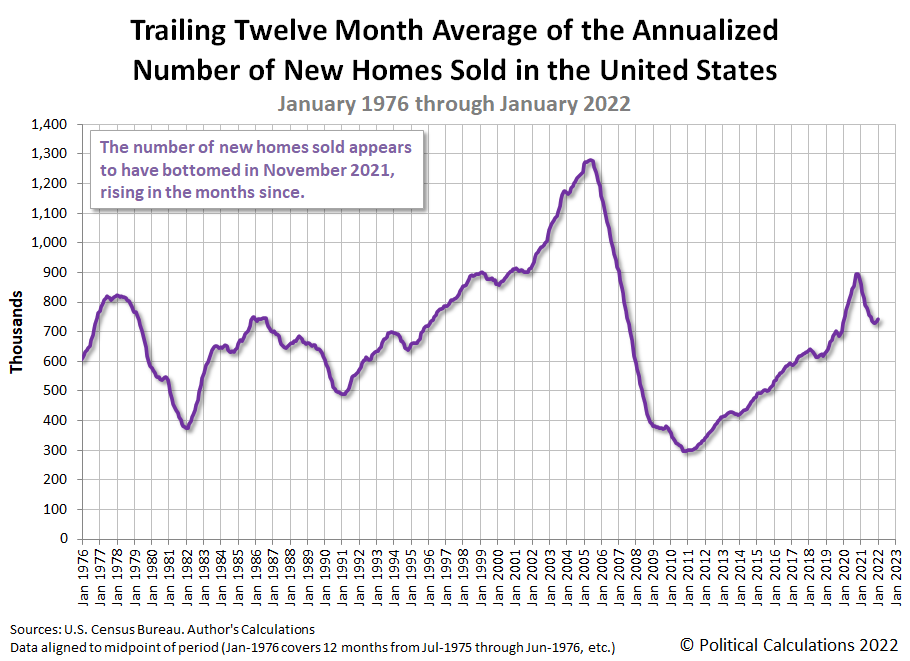The U.S. new home market showed signs of a rebound in January 2022. The market capitalization for American homebuilders ticked up for the month over a potential bottom of 2021's downtrend in December. Political Calculations' initial estimate of the overall market capitalizaton of the U.S. new home market for January 2022 is $27.53 billion, an increase of 0.5% from December 2021's revised estimate of $27.38 billion.
The increase in the market cap for new homes was driven by two factors. First, the number of new home sales rose, continuing the increase in sales that began after November 2021. Second, the average sale price jumped higher, as 2021's rising trend for new home prices reasserted itself.
The following two charts visualize the trailing twelve month averages of the U.S. new home market's underlying annualized sales and average price data.
With both new home sales and prices rising in January 2022, the market cap for the U.S. new home market ticked upward, breaking its year-long downtrend and moving into positive growth. The question now becomes how long can that last with new homes becoming less affordable for the typical American household?
Labels: market cap, real estate
Welcome to the blogosphere's toolchest! Here, unlike other blogs dedicated to analyzing current events, we create easy-to-use, simple tools to do the math related to them so you can get in on the action too! If you would like to learn more about these tools, or if you would like to contribute ideas to develop for this blog, please e-mail us at:
ironman at politicalcalculations
Thanks in advance!
Closing values for previous trading day.
This site is primarily powered by:
CSS Validation
RSS Site Feed
JavaScript
The tools on this site are built using JavaScript. If you would like to learn more, one of the best free resources on the web is available at W3Schools.com.


